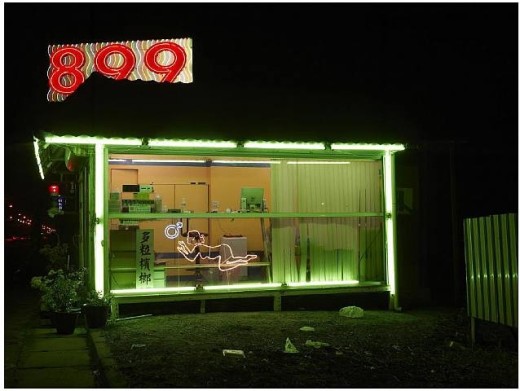
Matseto Seto
“The general public now draws its notion of art from advertising , MTC videos, video games, and Hollywood blockbusters. In the contemporary context of media generated taste, the call to abandon and dismantle the museum as an institution has necessarily taken on an entirely different meaning than when it was voiced during the avant-garde era. When people today speak of “real life” what they usually mean is the global media market. And that means: the current protest against the museum is no longer part of a struggle being waged against normative taste in the name of aesthetic equality but is, inversely, aimed at stabilizing and entrenching currently prevailing tastes.”
Boris Groys
“The government and their friends in the media want to turn people’s anger at poverty and insecurity against their neighbors. The alternative is to turn it against the bonus-grabbing bankers, tax-dodgers, rapacious landlords and employers who are actually responsible.”
Seamus Milne
知彼知己,百戰不殆;不知彼而知己,一勝一負;不知彼,不知己,每戰必殆
(“Know your enemy and know yourself, find naught in fear for 100 battles. Know yourself but not your enemy, find level of loss and victory. Know thy enemy but not yourself, wallow in defeat every time.”)
Sun Tzu
Something I have noticed, more and more often, is an inability for people, usually angry people, to correctly remember and identify their actual enemy. This confusion, as Milne suggests, is manufactured by mass media. From the reactionary and increasingly fascistic product turned by Hollywood film and TV, to the state department PR message, to the education system itself. In the United States this is especially true. And it is true, often, on the left, where a lynch mob mentality operates on a basic psychoanlytical level and under cover of ideologies of liberation. Feminists will angrily attack the pardon of Malik Richmond, in the Steubenville rape case, despite the fact that Richmond was obviously set up by his white friends. The reason, usually unconscious, is that the economically ravaged rust belt city of Steubenville makes an easy and reassuring target. The ridicule of the under class, working class, and uneducated culture of this bankrupt Ohio town is easy. The educated white feminist validates her own superiority by denouncing the rape culture of low bred football players and their coach. The fact that frat boy culture promotes rape in a more intentional fashion goes unmentioned, often. Frat boys do what they want with impunity. The New Yorker article by feminist writer Ariel Levy is denounced for pointing out the racial context. By extension, the entire racist justice system if pardoned.
I wrote last time about Arab/French comic Dieudonne, and the ‘quenelle’ gesture. The context is forgotten. The Imperialst wars against Arab nations is forgotten. News has become context free, and history erased. Everything is a movie. And if sex is involved, especially, the story will unearth and stimulate the lynch mob.

Balthasar Burkhard
“You plead for happiness in life, but security means more to you, even if it costs you your backbone or wrecks your whole life. Since you have never learned to seize upon happiness, to enjoy it and safeguard it, you lack the courage and integrity. Shall I tell you, little man, what kind of man you are? You listen to commercials on the radio, advertisements for laxatives, toothpaste, shoe polish, deodorants, and so on. But you are unaware of the abysmal stupidity, the abominable bad taste of the siren’s tones calculated to catch your ear. Have you ever listened closely to a nightclub entertainer’s jokes about you? About you, about himself, and your whole wretched world. Listen to your advertisements for better bowel movements and learn who and what you are.
“Listen, little man! Every single one of your petty misdeeds throws a light on the wretchedness of human life. Every one of your petty actions diminishes the hope of improving your lot just a little more. That is ground for sorrow, little man, for deep, heartbreaking sorrow. To avert such sorrow you make silly little jokes. That’s what you call your sense of humor.
You hear a joke about yourself and you join in the laughter. You don’t laugh because you appreciate humor at your own expense. You laugh at the little man without suspecting that you are laughing at yourself, that the joke is on you. And all the millions of little men fail to realize that the joke is on them. Why have you been laughed at so heartily, so openly, so maliciously, down through the centuries? Have you ever noticed how ridiculous the common people are made to look in the movies?”
Wilhelm Reich, Listen Little Man
The message of almost every single TV cop show (almost, but not every one) is that sacrifice to the state is the most noble behavior. I read constantly how angry people are at various manufactured enemies. Blame the victims. The victims are the enemy. The poor, the homeless, the immigrant, anyone not with the program. The default mind set is one of sadism, not compassion. Punishment is equated with goodness. With justice. With transcendent virtue. Support the troops. The deep indelible fear of disruption is reflected in cultural product, and in art. I think one of the reasons that aesthetic analysis is important has to do with understanding that which is disruptive of the master narrative or what Ranciere would call the regime of art, and that which actually reinforces it (per Groys comments at the top).
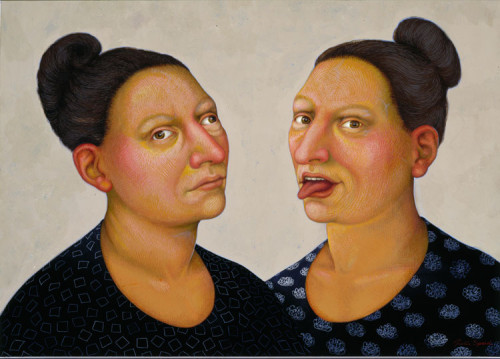
John Graham
The case for museums is, the short version, they are repositories of history. Mass media is the destroyer of history. Political PR is the destroyer of history. Anything pegged to the marketplace is also pegged to constant turnover of inventory. Whatever kind of inventory. Fashion is in need of the “new”, even if its not new, but who knows that if there is no historical comparison.
This really quickly brings up the question of ritual space. There is an unavoidable religious aspect to this, though. For any medium, and we can use theatre or painting, say, the presentation or staging of something in this ritual space is implying or questioning something outside of that space. This is another calibration of the “off stage” I keep writing about. Art must point toward something outside the theatre or museum or gallery. Something that cannot be accessed by just walking outside. Groys brings this question up in the context of the “new”, and in a sense he echos what Jonthan Crary said about the “new” as well. But let me stay on Groys’ point for a second. There is a distinction to be made between the “new” and the “different”, and this distinction cuts to the core of aesthetics. And it has a clear appeal to history. Museums are, says Groy, a place for manufacturing the present. Something “new” soon becomes something only different. And yet, this is not quite true. And it where Groys seems to distrust what the experience of the artwork actually does, and what it does is imply mimesis. Kierkegaard is invoked, who opposed the notion that the “new” was somehow distinct from the “different”. For to recognize different means that we already have the capacity to know difference as difference. So difference can never be “new”. But I might argue here, the “new” is a relatively, uh, “new” concept. I think as most people understand the idea, the “new” is basically the latest, that of recent production. It is fashion. Douglas Crimp, whose essay “On the Museum’s Ruins” says “through reproductive technology, postmodernist art dispenses with the aura. The fiction of the creating subject gives way to the frank confiscation, quotation, excerptation, accumulation, and repetition of already existing iamges. Notions of originality, authenticity and presence, essential to the ordered discourse of the museum are undermined”. Well, ok, but I’m not sure this is a very meaningful observation. And I’m not sure it is actually linked so exclusively to reproductive technology. If we think of narrative, then sampling is just history. And if it is painting, or post painting installations, then even if the cult of authorship is undercut, the resulting experience, the remaining experience still exists. For that is what museums do; they manufacture not just the present, but they manufacture the ‘outside’. And the real reason authorship has so little lasting importance has more to do with space, than with image.
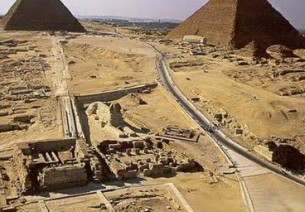
Giza, Amarna lodge area, foreground. Later destroyed for further excavation.
The Museum as an idea is not delegitimized by blurring the lines of authoriship, and certainly not by claiming Benjamin was right. For he WAS right, but he was also wrong. One reason I continue to have suspicions about some conceptual art is that ritual space remains, even if that space has become mobile and malleable.
I also am trying to tie these ideas about historical erasure with the rise of a new practice of blaming I see today. I see it in culture, in Hollywood certainly, where increasingly the refused apology is a standard trope, and where stigmatizing those who fail is standard and acceptable behavior. Forgetting who the enemy is, and instead directing one’s anger, usually accompanied by self identified virtues (Feminism, anti racism, anti corporatism, or enviromental concerns) at various scape goats, is very much like NATO bombing countries without air forces or any defense at all because a few people living there have bad breath. There is the Puritan just beneath the mask of progressive liberal. Sensationalized stories usually feature someone from the underclass. That someone from the underclass has done something horrible; something racist or misogynist, or enviromentally irresponsible. And then the attacks begin. Meanwhile The Wolf of Wall Street is a huge hit.
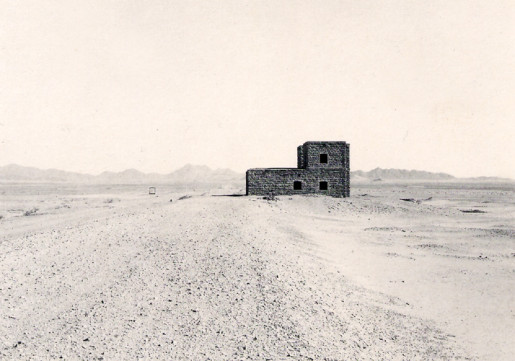
Ursula Schulz-Dornburg, Saudia Arabia

Emil Schumacher
He wrote “In the 20th century it was the painters who introduced the new space conception. This was in conscious opposition to the restless superficiality of painting and architecture in the late 19th century and to the Art Nouveau.” But really, Le Corbusier and Kahn were returning to a space conception of the first period. This was Mesopotamia and Egypt. Ancient Greece belongs here, too, but it also marks a transition to the second. The stupas and temples of China and south Asia expressed much the same thing as the pyramids and parthenon, only more vertically. What this first architectural period did, especially the Egyptians, was to create volume…to take up space, but also, crucially, to point toward the interior space of worship, of the unseen, of the dream. With Romans especially, and later in Gothic cathedrals, the interior space of man became the literal space of the interior of the building. A good deal was lost in this transition.
The transitional phase signaled by Greece, had started to build to the scale of the human. Still, the devout coming to temple had no access to the dark interior. The development of windows…first clerestory, monestary-like, and later human level, for ‘looking’ at the landscape, really marked the start of the emptying of the sacred. The picture window as reminder of the outside. Reassuring reminder. It was also authoritarian in a sense, and strategic for the ownership class.
I’ve always said the ideal theatre was the inside of an Egyptian tomb, out of sight of the audience, and probably without actors.
But what does this have to do with blaming, and with museums? This has to do with an increasingly trivial inner life. Taking the place of the infinte, taking the place of the off-stage, of an elsewhere, is the ego, the super ego, present, illuminated by key light or spotlight, and grinning, white and glossy and optimistic. The post modern dispenses with the daemonic, and instead it provides Cindy Sherman, or simulacra, brands, and surveillance. There is something connected between the NSA, the surveillance culture, and a belief that museums are ‘so five minutes ago’, that museums are keeping people from experiencing the ecstatic new, the deleting of the past, would usher in a radical exciting new. A present, a “now”. Museums as gatekeepers to historical suffocation. Now, there is a truth embedded within this theme, that of the curator class, of institutional hegemony over the arts (as I wrote about the last couple postings), but that truth also contains its own untruth. For today, the branded museums are hardly museums at all. The “idea” of a museum however, is the link to a past, a past that gives the viewer, the attendee, the citizen, a place from which to understand current decadence, political and aesthetic, and the dialectics of image and form. It is also, most importantly, a place of quiet, it is one of the few remaining centers for secular meditation. The branding and selling of Eastern disciplines or new age mysticism, from Yoga to Crystals, to pre-packaged Gurus of Buddhism or Hinduism, are there to obscure the reality of real difference.
Identifying the enemy. I believe that in an obsessive interest in what is ‘contemporary’, the public is losing track of causation. The idea that it is important to trace back the causes, and on the way to take in the landscape. The context. The poor are under assault every minute of every day. The rich, the affuent, are not in prison. The police do not drag the occupant of new BMW out of his car in the Pacific Palisades and beat him into intensive care. They dont stop and sexually assault the woman behind the wheel of a new Jaguar on Coldwater Canyon, and they don’t harrass and intimidate people with townhouses on Central Park East.
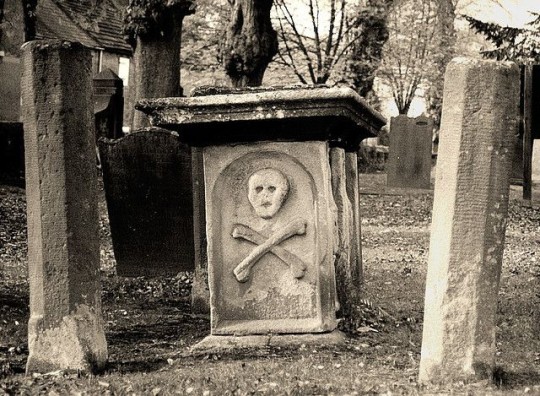
Cemetery, Eyam Berbyshire, marking plague, 1665
Charleston, West Virgina is the capital and largest city in the state. The city itself has only fifty thousand some inhabitants, but the metropolitan area (the greater Charleston area as newcasters used to say about such places) has over 300,000. The history of Charleston goes back to colonial times, but the city became an economic center after the discovery of salt brines along the Kanawha River in the early 19th century. The opening of the Erie Canal in 1825 had caused a spike in the salt industry (Syracuse being the northern center). However, within a few years the Kanawha Salt Trust was larger than any in the north, and in fact the largest in the world. The story of West Virginian culture however revolves around the Civil War. The split from it’s southern, and confederate mother state was driven by the economics of coal, not salt. The steel works of the north, in Ohio, and Pennsylvania, were connected in dependency on the coal mines of West Virginia. This is Scots/Irish immigrant stock, the warlike and tribal culture of the northern British Isles settled in concentration in the geographically cut off valleys and mountains of Appalachia. West Virginia has been decimated by the coal business. Charleston was, like a lot of state capitals, a compromise choice. Even this goes back, like most things in West Virginia, to the Civil War. Lincoln hastily made them a state, and they picked Charleston over Martinsburg or Clarksburg. While neighboring Kentucky, or Tennessee, or even Virginia, all grew with the plantation culture of southern gentlemen, the mandarin land owners that raised horses, or grew money crops like tobacco and King cotton. West Virginia had coal and salt. West Virginia had no horse farms. West Virginia marked the start of the north. This is even today a culture apart from the aristocracy of coastal colonial regions such as North Carolina, and its really never been comfortable with the people who settled to the west, in the Great Smokey mountains, or on into Texas. Horse culture is a fascinating part of this. Those on horseback look down on the tillers of the land. Worse, even the tillers of the land look down on the miners. There is a fierce counter trend of masculinist pride in miners, though. Still, between the northern steel mills, and blast furnace landscapes to the North, and the caste system of horse riding southern royality, is Appalachia, a region that could nurture little more than what was torn out of the mountain rock, and then possessed by the predatory coal oligarchs. Appalachia has always been the center of much of the Federal “War on Poverty”, which really meant the consolidation of the region’s economy, and placing it into the hands of large Natural Gas and Coal companies. The extractive systems at work in the fossil fuel industries has been technologized, and the labor force reduced. This is also part of the long history of this region. Today, in micro-booms, a highly specialized labor force comes in, from outside usually, and for a brief time the area thrives economically, while at the same time further economic degradation is taking place. From Kingston, Tennessee, to Martin County Kentucky, to Harlin County Kentucky to Blair Mountain, can now be added the Elk River disaster.
In recent times the signature cultural event in Charleston was the filming of the TV reality show “Buckwild”. Where once came the regional folk genius of white gospal music, of the high lonesome bluegrass traditions of guys like Roscoe Holcolmb, music based around banjo, dulcimer, and auto harp, all brought over with Scots and Irish immigrants, one now finds generic franchise restaurants, lots of bars, and lots of emigration. Today this is city with a median income of just over 20,000 dollars a year. The population has dropped every year since 1970 when over 80,000 people lived in Charleston. There are a couple overpriced steak houses, where city officials dine, Laury’s, where you can get a nice martini, or the Chop House, or Tidewater Grill. These are the sorts of places one finds today across the U.S. Generic bad food, generic bad service. You find them in small city center malls, or attached to sports stadiums, or in walking distance of whatever is the best hotel in town, which in Charleston is the Embassy Suites, where you can book a room for about 190 a night. Charleston is another low rent but not destitute city that dot the country. Businessmen stay there, and you can see them at every bar in every one of those hotels, or eating at every one of those steak houses. There is no power weilded in Charleston, only survival. Only leaping at the Koch Brothers offers of corruption. For without that corruption your company will have to shut down. West Virginia also has, alongisde Missouri, the highest number of homemade meth labs in the country. I’ve driven through West Virginia several times over the years. In many ways nothing changes. In other ways, everything has changed.

Kendall Geers
A week ago, Freedom Industries, which is, according to its website; “a full-service producer of specialty chemicals for the mining, steel, and cement industries,” accidently dumped a whole lot of 4-methylxyclohexane methanol (MCHM) into the Elk River. MCHM is a compound with “immediate (acute) hazards” according to the spokespeople for Homeland Security. Freedom Industries is actually a recent merger between the Etowha River Terminal, Poca Blending, and Crete Technologies. The man behind Freedom Industries is Gary Southern, or so he says. The website lists two other men, so none of this is quite clear, but really, the major player behind this merger, and everything else, is Carl Kennedy, a restaurant tycoon of sorts (West Virginia scale) and a local ladies man (so several newspapers declare). Kennedy is a twice convicted felon, once for tax evasion and once for cocaine. Nothing really all that bad, but this is Charleston, and guys like Kennedy get busted, while Larry Summers won’t. Suffice it to say, this is cronyism, and a corrupt small town city government that is coupled to state wide corruptions, coupled to the rollbacks on enviromental safety regulations starting with Bush and followed by Clinton and now Obama.

Katharina Sieverding
The WSWS reported : “Last Thursday, a leak in one of the storage tanks at the Etowah River facility was detected after nearby residents complained of a strong odor coming from the site. The tank had stored roughly 40,000 gallons of MCHM, 28,400 of which were said to have leaked, with another 7,500 gallons having contaminated the nearby Elk River. The contamination has affected the drinking water of nearly 300,000 people in West Virginia.”
and “In fact, incidents similar to the Elk River spill are common occurrences in the chemical industry. In a 2009 report, the New York Times found that companies violated anti-pollution laws almost 500,000 times in the five-year period from 2004-2009. Violations ranging from failure to report emissions to dumping chemicals at concentrations considered dangerous to people.
Three years ago, the US Chemical Safety Board asked the state to create a safety plan to prevent such accidents, after a 2008 explosion at a West Virginia facility owned by agricultural firm Bayer CropScience killed two workers. No plan was ever created. Apparently, the demand was dropped by regulators.”
There is another interesting side bar story reported by the Charleston Gazette:
“In 2009 Freedom Industries was at risk of either going out of business or leaving its location on the Elk River, Farrell told the Charleston Daily Mail.
Sand, silt and mud had built up in the river, making it difficult for barges to travel the 2.5 miles from the company’s river terminal to the Elk’s confluence with the Kanawha.
But the river was dredged in 2009 by the U.S. Army Corps of Engineers, thanks to $400,000 from the federal stimulus.
“It could’ve put us out of business,” Farrell told the Daily Mail about the undredged river. “At some point we wouldn’t have been economically fit to run the facility. That’s our claim to fame: the barges.”
In 2008, Freedom Industries secured a contract to distribute a line of products called Talon that are used as a binder in coal processing, according to a news release issued at the time. Freedom distributed Talon to eight states, including West Virginia.
“We are excited to offer our customers inventive products like Talon that push past the status quo in coal recovery to bring profit and productivity benefits to mining preparation plants,” Joshua Herzing, a Freedom executive, said in the press release.
Talon is made by Georgia-Pacific Chemicals LLC. Georgia-Pacific is owned by the billionaire industrialists Charles and David Koch.”
The Koch’s of course are the kinds of people who push through federal stimulus packages, or those that are in their interests. And they’ve also lobbied extensively for a decade against enviromental regulations.
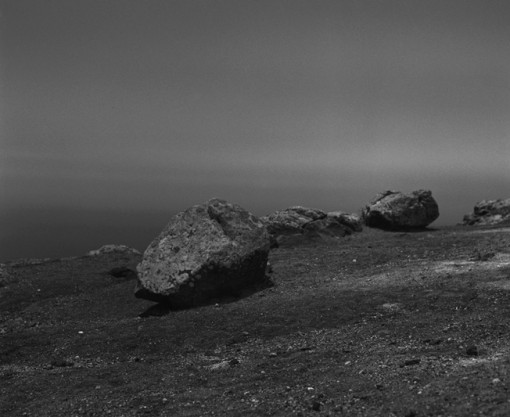
Awoisk Van Der Molen
There are groups fighting the likes of the Koch Brothers, and the rest of the Federal government programs to further destroy the mountains of this region. They are all supportable. Appalachian Voices, Mountain Justice, and the West Virginia Highlands Conservancy.
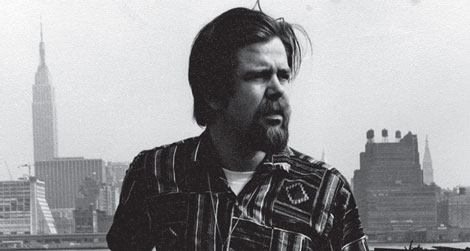
Dave Van Ronk
As a footnote of sorts, the Coen Brothers new film is out now, “Inside Llewyn Davis”. Like most Coen Bros. films, this one has been met with great critical acclaim. Watching it is a strange experience because after a while there is a sensation that what one is watching is a curious facsimile of a movie. I will say, the film offended me less than a lot the brothers turn out. But still, here you have a fictionalized study of the folk music scene in Greenwhich Village, circa early 1960s. The lead character is a pastiche of Dave Van Ronk, and a maybe a couple other singers, and around him are secondary characters only vaguely modeled on the likes of Ramblin’ Jack Elliot, Peter Yarrow, et al. There is even allusion to Al Grossman, via the use of his name if not his persona. It is worth remembering what Dylan said of Van Ronk (since Dylan sort of appears at the end of this film)..
“Dave Van Ronk, he was the one performer I burned to learn particulars from. He was great on records, but in person he was greater. Van Ronk was from Brooklyn, had seaman’s papers, a wide walrus mustache, long brown straight hair which flew down covering half his face. He turned every folk song into a surreal melodrama, a theatrical piece — suspenseful, down to the last minute. Dave got to the bottom of things. It was like he had an endless supply of poison and I wanted some . . . couldn’t do without it. Van Ronk seemed ancient, battle tested. Every night I felt like I was sitting at the feet of a timeworn monument.”
The first thing one notices about this film is that politics has been removed. Utterly. The counter culture is ridiculed in a sense (the supporters will say, with fondness) but then everyone is ridiculed in this film. But not ridiculed for political idealism or anything, because there are no politics, but for…well, not being cool enough I guess. One thing that had lurked around the edges in previous Coen Bros. films, the mean spiritedness, is now foregrounded. It is the point of half the scenes in the film. The smugness of the direction, the editing, the writing, can never be forgotten. The patronizing tone of Fargo is here, far more intense and far nastier. There is also that strange white liberals penchent for toilet issues (from John Goodman’s relationship to public restrooms, and his physical handicap, to Llewyn’s father shitting himself while his son plays him a favorite song). Oscar Isaac is an interesting actor, up to a point, though from within a pretty narrow palette. He gives Llewyn an interesting surliness and self involvement, but I’m not sure if that was the intention. Still, he wasn’t boring. The usual assortment of classical themes are dropped in without much reason (the cat is named Ulysses) and for all this, the film is oddly sanitized, both literally, materially, and thematically. When a character describes his apartment as a “dump” and then we subsequently see it, there is a curious quality of dissassociation because the apartment is clean and neat. But then its not a rich person’s apartment, ergo it’s a dump. The Cohn Brothers look to imbue much of their work with a sort of mythic or fairy tale ambiance. Things are just enough out of sync, just off kilter enough to create this illusion of allegory. But its not elliptical, and it certainly not allegorical (how many reviews describe the Coen brothers making ‘shaggy dog stories’? Answer, literally almost all of them). For there is nothing from which one can choose to seperate oneself; it is just a string of scenes that go ’round in a circle’ (another conceit meant to imply deep meaning). The elliptical is a strategy of misdirection, but it is also a means to direct mimetic focus. Here there is only a Disneyworld version of folk music, in period, done with expensive cinematography. These are shallow filmmakers. They are talented, and they make very attractive films. They make attractive films that are meant not to alienate, but to mollify. And indeed, the editing in particular is confident and goes a long way toward instructing the audience that what they are watching is a deep meditation on folk music in American culture. But they are also telling their audience, hey, look at the rubes and yokels — we are so lucky to be hip and white and affluent. This film is a good deal like “A Serious Man” in that there is more left out than is put in. But as Gore Vidal said of the Cockettes, ‘having no talent is not enough’. Just arbitrarily leaving out key narrative elements does not profundity make.

“Inside Llewyn Davis”, dr. Joel & Ethan Coen, 2013

add West Virginia
http://www.commondreams.org/headline/2014/01/20-0
John:
I could be wrong, and I’m not trying to criticize you but am merely hypothesizing with respect to your frustrations regarding the cultural apparatus, but I sense your disenchanted with the modern-day left’s emphasis on social or civic function at the expense of aesthetics, but per Adorno, you feel the emphasis on metaphysics and aesthetics to the wholesale exclusion of the civic as epitomized by someone like Roger Scruton is highly reactionary, and it is, but you struggle to find a solution to the dilemma. Am I right? Because I would the say the point is that metaphysical issues relating to the human condition or even to nature itself matter regardless of the social class, but to focus almost wholly on metaphysics, at least in the 21st century would be civically irresponsible. If that’s so, couldn’t one suggest that artists like Tarkovsky, Ingmar Bergman, and Vladimir Nabokov, and maybe even someone like Shostakovich are guilty of this, since with the exception of Bergman, their works display an inordinate focus on “aesthetic beauty” at the expense of civic concerns.
Um, Nabokov’s Lolita was probably one of the most political novels ever written. It’s political to its bones because it’s a dissection of the veneer of culture, a nuanced depiction of how much depravity and sin it can cover. The fact that Humbert Humbert is utterly tainted and utterly sinful, in some essential, organic way — culture and refinement as a force of nature — and the fact that we are forced to inhabit his subjectivity (which the novel foregrounds completely; it is all surface, there is no hint of any background apart from the one the narrator’s subjectivity creates) means that we are left with no choice but to strip ourselves bare of all conditioned cultural reflexes and really examine the nature of culture as if we’re confronting it for the first time.
Ingmar Bergman, yes some of his films can be accused of bourgeois sentimentality or solipsism, with a septic private world of family relations that has no relation with the wider political context. But not his best films, IMO, and he’s produced dozens of masterpieces. Just because they don’t have a didactic civic *moral* doesn’t mean they don’t engage with the effects of a society-wide system of oppression. In some films that layer of meaning is buried too deep and would take too long to unearth in a short comment, but in “Fanny and Alexander” for example the critique of religion, patriarchy and gender is very explicit.
Tarkovsky and Shostakovich — in the political context they worked in, daring to present mysticism in their art is in and of itself a subversive act, simply because they will be giving voice to a perspective that is “not allowed”.
Especially with Shostakovich, the trouble with pure classical music is that it is so difficult to talk of a “civic” aspect. Even with Bach. Now the pure vs programme music debate is a whole other kettle of fish, but in abstract music it’s almost impossible to refer conclusively and unambiguously to anything except to musical elements, to itself. Music is naturally solipsistic. Even Schoenberg, say — yes Adorno would argue that his music has a “civic” aspect but again I’d argue he’s stretching, because nothing in the music itself points conclusively to a programme of “oh this music is about exploding political oppression and a striving for freedom” — I mean you might equally argue “the fragmentation and decentering of tonality represents the collapse of the society into the individual until only the pure individuality without social dimension exists”. Whatever political programme you give to abstract music is going to be on shaky foundations.
But Shostakovich’s operas are anything but “unpolitical” or “uncivic”. I mean, how can Lady Macbeth of Mtsensk District lack a civic dimension? In fact none of his operas are purely aesthetic, unlike say Verdi.
Okay. This is just my impression, but similar to Gore Vidal, Nabokov’s gripes largely seemed to relate to his perceived passing of an era. I don’t how to phrase this, and yes Nabokov was *artistically talented* in the way someone like Matisse or Dali was *artistically talented*. Their shouldn’t be any sort of debate there, but it often seems the expression of reactionary political views dressed up in the veneer of radical rherotic. Sort of like, “oh, people don’t read anymore, they watch films or whatever. Back in the old days wearing our tweed jackets, we would recline in our leather chairs in our oak wood libraries with our leather bound volume of Sophocles as we smoked our pipe with the sun setting behind us.” That sort of thing. So yes, they have correctly diagnosed the pernicious influence of the contemporary cultural apparatus, but their solution to the problem seems quite reactionary to me regardless of the veneer in which it’s dressed up.
Then again, maybe in the case of both Vidal and Nabokov, their inflated egos just rub me the wrong way, regardless of the intrinsic value of their textual contributions.
Someone like Samuel Beckett or Fassbinder may have had just as big an ego, but they weren’t quite as reactionary, whereas someone like Eric Rohmer may have been a tad reactionary, as well, but he wasn’t nearly as pompous and self-righteous.
(re Nabokov) “oh, people don’t read anymore, they watch films or whatever. Back in the old days wearing our tweed jackets, we would recline in our leather chairs in our oak wood libraries with our leather bound volume of Sophocles as we smoked our pipe with the sun setting behind us.”
—
When does Nabokov ever express the idea that a return to the old “Great Tradition” of literary culture will be solution to society? Or if he does, how does it come through in his writing? I mean Humbert Humbert is throwing literary allusions left and right. He’s the sort of person expressing the elitist, anti-new-artforms sentiments. He’s the sort who’d boast “Back in the old days wearing our tweed jackets, we would recline in our leather chairs in our oak wood libraries with our leather bound volume of Sophocles”. And yet the culture does nothing for him. Nothing. It doesn’t make him a better person and it doesn’t save him. In fact, it makes him relish his depravity even more, giving sin a pleasant flavour. That seems like a scathing critique of “Great Culture like in the good old days will save us”, rather than the subtext you’re suggesting.
But back to my original point, what place does *artistic talent* or *aestheticism* have within the cultural discourse? Because if we conclude that artistic expression is above all else an act of civic duty, then the great artists of the 20th century may as well be Ken Loach, Diego Rivera, Arthur Miller, and Toni Morrison. But if one were to claim it’s all about aesthetics we’d end up with Terrence Malick, Fellini, Nabokov (not that Vlad is a bad artist by any measure), and yes, Salvador Dali. You could even throw Rousseau in there perhaps. Then if someone claims it’s all about metaphysics we’ll wind up with something slightly different but equally limiting. So not to sound tempered, but I suppose what we really seek is a synthesis of the three. But it seems as though something that’s aesthetically accomplished and civically minded but not metaphysical is still okay (Godard, Balzac, and Fassbinder instantly come to mind as artists who fall into this category), whereas something that’s aesthetically impressive and metaphysical but not civically minded is deemed irresponsible.
Oh gee. Ok….well, the problem above is that the original premise would need concrete definitions to have any meaning. So no thats my disenchantment @remy. I think what Im trying to point to, often, that you maybe are responding to, is the tendency in a certain branch of the left to valorize message. So per se that has nothing to do with civic duty. I think that in the light of the culture industry it is hard to know what role culture plays or what the majority of people expect of it. I also think its not at all simple. So its not about message. That can be part of it, but terms like irresponsible are very problematic. There is no civic duty per se attached to creativity — but culture and artworks exist as and come from material conditions, from within history. I just think its hard to respond to this because these terms are tossed around and they mean nothing unless one really define them and analyse them, and thats not going to be easy. The point is that the aesthetic experience, the engagement with an artwork, whether photograhy or film or theatre or painting or music or dance or poetry….any of it, is dialectical, and its complex. I like Nabakov to a degree. I think Lolita is pretty resonant but he had a narrow set of concerns. He wrote beautifully the way only those who have so perfectly learned a second language can write in it. (Conrad is another). The political dimension of any artwork is always going to be contested. Bergman made several great films in my opinion, and a LOT of very bad films. I am not at all sure bergman will age very well. I suspect, for example, that Antonioni might age more gracefully, and Pasolini already seems even better than when he made his films.But art is not activism. Its not a message. Its a more complex expression of a many things, and thats why its of importance. It contains within it a variety of factors and meanings. And sometimes its lack of meaning is its greatest meaning. The radical aspect of art is in its form not its opinions…as adorno said.
Okay, I agree with all that you said, although only on a side note, the more I understand cinema the less impressed I am with Antonioni, but that’s for another discussion. But to bring this to Adorno, it should be noted he was a man who knew a world before the cultural apparatus developed into the pernicious influence it is today. I obviously have not had the privilege of living in a world free from bombardment by the cultural apparatus, so the only way to handle it is by tackling it head on, which is of course what you do and what Godard has done his entire career. So I guess my point is that if a modern-day middle aged man, say someone who was born after 1945, espoused philosophical views very similar to those of Adorno he would be dismissed as a naive Romantic or merely a reactionary. As someone who lived right through the “high modernist” era what Adorno had to say was certainly of value, needless to say. My point isn’t to devalue him, not at all, but I just to ponder why a baby boomer who holds the same exact intellectual and philosophical values as Adorno does would be deemed stodgy or reactionary. Is it because to recoil into one’s ivory tower when the apparatus has become such an unstoppable force would be “irresponsible”? I guess I’m just hypothetically asking what’s wrong with someone saying “high culture” is a noble thing that must preserved and one need not bother with the culture industries, since what they produce is of little intellectual value? I know I’m generalizing and oversimplifying Adorno, I really do, and I am being provocative here, but yes, I do feel one must engage directly with the apparatus in order to bring it down, considering the state of the world we currently live in, but I don’t think Adorno would have said that. He probably would have said something more along the lines of “watch fewer Marilyn Monroe films and read more Socrates”. So I guess the impression I get is it’s okay for a man born in 1903 to think that way but reactionary for a man born in 1955 to think that way. I could be wrong, but…
I have yet to see her comment on Adorno specifically, or maybe I missed it, but I’m sure your most frequent commenter Molly probably hates Adorno for the same reason she hates both Beckett and Heidegger.